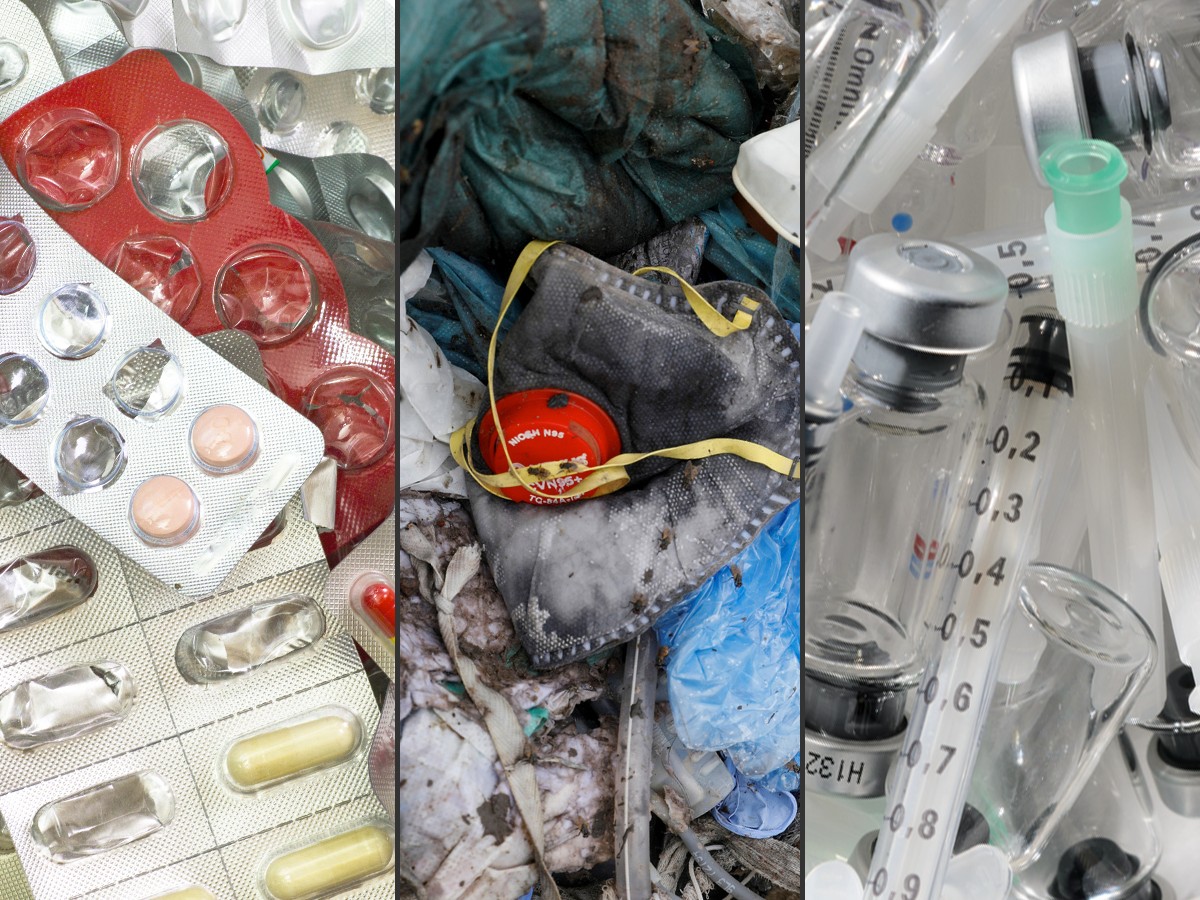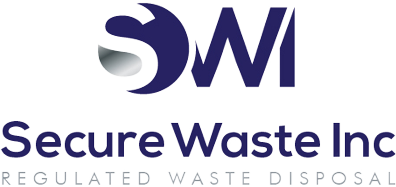Where Does Biohazard Waste Go After Your Medical Waste Company Picks It Up? Expert Answers From Secure Waste
At Secure Waste, we frequently receive this critical question! It’s essential to know that regulated medical waste mustn’t be discarded in regular trash or recycled without proper treatment to make it non-hazardous.
As a trusted leader in regulated medical and sharps waste management in Maryland, Virginia, and Washington, D.C., we are excited to share comprehensive insights about the journey of your medical waste post-collection and outline some effective treatment options. We’re here to help, ensuring safe and responsible disposal every step of the way!
When managing regulated medical waste, healthcare organizations often concentrate on the intricate internal processes that govern the safe disposal of hazardous materials. You can learn how to handle regulated medical waste properly here.
This includes training staff on best practices for handling and discarding contaminated items, such as used syringes, surgical gloves, and other biohazardous waste. Organizations also monitor the frequency of waste container servicing and emptying to minimize risks within their facilities. However, a significant aspect that is frequently overlooked is what happens to the waste after it leaves the healthcare facility.
As conscientious stewards of the environment and public health, healthcare organizations must maintain a keen awareness of the treatment and disposal processes for medical waste. This involves rigorously vetting and selecting waste management partners that comply with all applicable local, state, and federal regulations governing the disposal of medical waste. It’s essential to ensure that these partners utilize safe and environmentally sound methods—such as autoclaving, incineration, or secure landfilling—that effectively neutralize the potential dangers posed by medical waste. Need help with proper sharps needle disposal? Review Secure Waste Sharps Management.
Moreover, neglecting this responsibility can lead to dire consequences, not just for the environment but also for the organization’s reputation. If a waste management partner fails to meet required standards and practices, it could result in hazardous materials being improperly disposed of, leading to environmental contamination or public health risks. Such missteps can severely damage the organization’s credibility and trust within the community. Therefore, organizations should establish transparent communication with their waste management partners and regularly audit their practices to ensure they align with the highest standards of safety and environmental stewardship. This proactive approach is not only ethically sound but also vital for maintaining the integrity and reputation of the healthcare institution.

There are two primary methods for treating regulated medical waste:
Autoclaving—This process involves subjecting medical waste to a carefully controlled high-temperature, high-pressure steaming procedure for a specific duration to neutralize any infectious agents present in the waste. Autoclaving effectively sterilizes items deemed hazardous, such as sharps (needles, blades) and bio-contaminated materials (e.g., tissues, surgical waste). Once treated, this waste is considered safe for transport to a landfill, making autoclaving one of the most prevalent methods for managing regulated medical waste in healthcare settings.
Incineration—Incineration is employed for particular types of medical waste, most notably chemotherapeutic waste, which is hazardous and requires destruction. This method involves burning materials in a controlled environment at extremely high temperatures, significantly reducing their volume and ensuring that they cannot leach harmful substances into the water supply or contaminate the environment. The byproducts of incineration are typically ash and gases that are treated to minimize their environmental impact.
Waste Treatment: Autoclave versus Incineration
Incineration serves as a critical option for managing specific types of medical waste that cannot be effectively treated through autoclaving. Some hospitals have invested in on-site incineration technology and equipment, while others rely on external medical waste removal companies for transportation and disposal of their waste. Utilizing on-site incineration can significantly reduce the volume of medical waste that must be transported off-site, resulting in substantial cost savings for hospitals—potentially saving thousands of dollars per load.
Pre-treatment processes are essential as they not only diminish the volume of medical waste sent to landfills (transforming potentially hazardous material into non-infectious or decontaminated waste) but also ensure a substantial reduction or complete elimination of infectious materials across various waste streams generated within the hospital environment. However, state regulations may require off-site incineration for specific waste categories. Some states impose strict limitations on incineration practices due to concerns regarding air pollution and its potential detrimental effects on air quality.
The Autoclaving Process
Autoclaving utilizes steam heat to achieve sterilization, effectively targeting microorganisms. Autoclaves are closed-chamber systems that use both heat and pressure to sterilize and eradicate pathogens in specific types of medical waste. While autoclaving is commonly utilized to sterilize medical tools and equipment, it is especially effective for treating sharps waste.
During the autoclaving procedure, medical waste within the autoclave is subjected to extremely high temperatures—typically between 121°C and 134°C (approximately 250°F and 273°F)—for a predetermined duration, which varies based on the type and volume of waste as well as the capabilities of the autoclave. Hospitals may utilize autoclaves of different sizes, ranging from 100 liters for smaller facilities to over 4,000 liters for larger institutions capable of processing extensive amounts of medical waste.
The Role of Medical Waste Management Partners
Engaging a robust medical waste management partner is crucial to ensuring that your medical waste is treated appropriately after leaving your facility. A competent partner should possess in-depth knowledge of both state and federal regulations governing medical waste handling, including the specific guidelines established by the Department of Transportation (DOT). Understanding the variances in requirements—such as the mandatory sterilization temperatures for autoclaving that differ from state to state—is essential.
Additionally, a reputable waste management partner should offer comprehensive tracking and recordkeeping capabilities. These tools are not only beneficial for internal compliance but also serve as vital documentation to demonstrate adherence to regulations, particularly if a regulatory authority conducts an inspection or audit. Establishing such partnerships enables healthcare facilities to maintain compliance and effectively safeguard public health.
Generators Responsible for Cradle-to-Grave Approach For Medical Waste Disposal
Specific regulations govern the management of hazardous waste generated by various industries. Detailed information is available for tiny quantity generators (VSQs), small quantity generators (SQGs), and large quantity generators (LQGs), with each group required to adhere to distinct standards that reflect their capacity for waste production.
These regulations are not merely guidelines; they represent a critical ethical and legal obligation for medical waste generators. Failure to comply can result in severe penalties and substantial fines, underscoring the importance of adhering to the rules.
For instance, as outlined by the Environmental Protection Agency (EPA), small quantity generators are obligated not only to meet hazardous waste manifest requirements but also to manage their hazardous waste storage tanks or containers in accordance with the regulations specified in 40 CFR §262.16 (b)(2)(3).
In contrast, large quantity generators may accumulate waste on-site for up to 90 days, although certain exceptions can apply. While there is no cap on the volume of hazardous waste they can retain, it must be housed within appropriate containment facilities, including buildings, tanks, or containers, in line with 40 CFR §262.17 (a)(1)-(4). Additionally, these generators are also subject to land disposal restriction requirements, as well as the mandated hazardous waste manifest standards.
All states are required to operate under the guidelines of the Resource Conservation and Recovery Act (RCRA) program. Healthcare waste generators must remain vigilant, as state regulations can differ significantly from federal standards, often imposing stricter requirements than those outlined in federal standards.
At Secure Waste, we take pride in delivering comprehensive waste management solutions that incorporate advanced techniques, including autoclaving and incineration. Our expertise extends to helping you navigate your state’s specific regulations and establishing programs that facilitate compliance. We also prioritize thorough tracking and meticulous recordkeeping. To learn more about how Secure Waste can become your dedicated partner in total waste management, please get in touch with us at 877-633-7328.

Expert Medical Waste Management: With over 25 years of industry experience, Secure Waste is a trusted local leader in hazardous and biohazardous waste disposal across Maryland, Virginia, and Washington, D.C. Specializing in medical waste management, sharps needle disposal, and biohazard waste removal, the company ensures full compliance with federal, state, and local regulations while prioritizing environmental sustainability.
The company also offers additional services, including secure document shredding and sharps container sales, providing comprehensive solutions for healthcare facilities and businesses. Our cost-effective services help clients maintain regulatory compliance without unexpected costs.
With a commitment to customer satisfaction, Secure Waste offers tailored waste management plans that align with industry best practices. Their team of experts provides reliable, timely, and compliant services, making them the preferred choice for medical waste disposal. For a free waste quote or more information, visit www.securewaste.net






